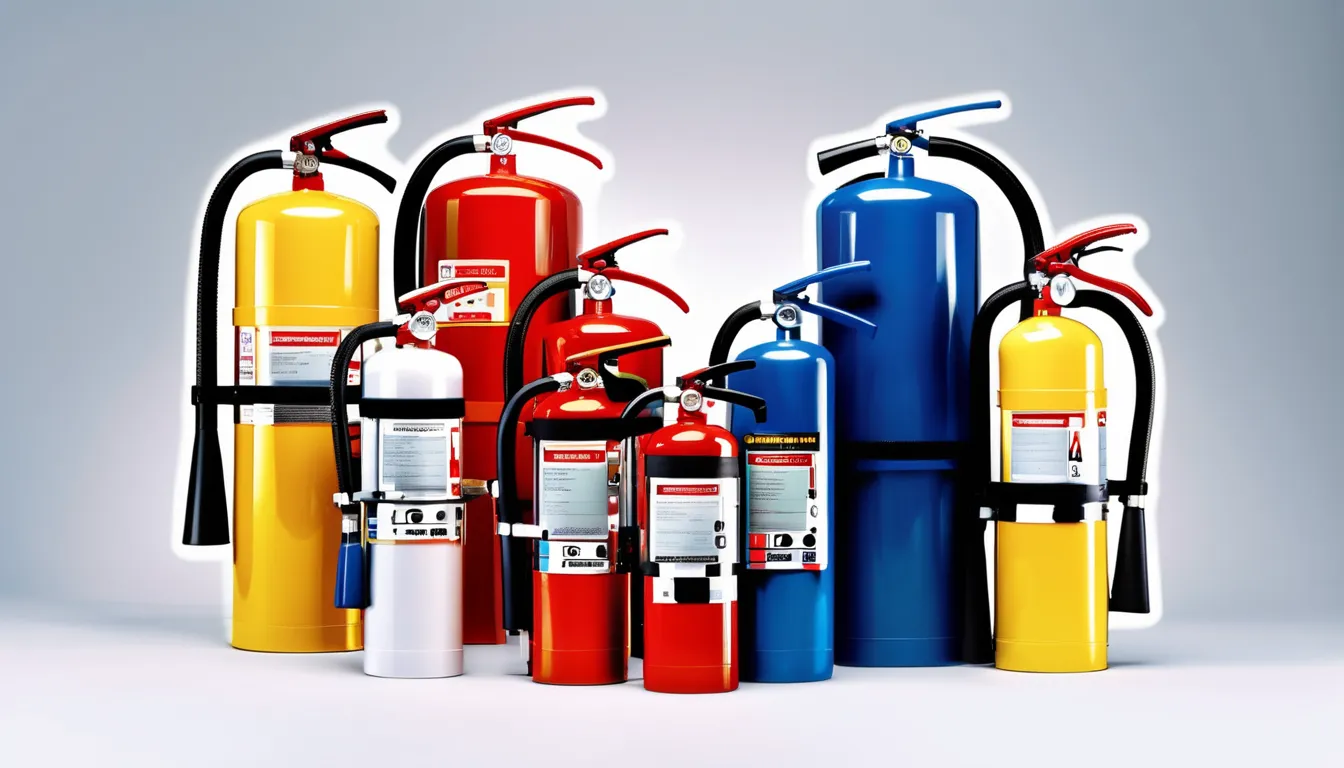In an emergency, knowing how to use a fire extinguisher can make a crucial difference. You might think it’s as simple as pulling a lever, but there’s a method to follow that can enhance your effectiveness and safety. Familiarizing yourself with the PASS technique is essential, but understanding when to use an extinguisher versus when to evacuate is equally important. What if you misjudge the situation? The next steps could determine not just your safety, but that of others around you. Let’s explore the key components that can prepare you for such emergencies.
Understanding Fire Classes
Understanding fire classes is essential for effectively using a fire extinguisher . Each class represents a different type of fire, and knowing which one you’re dealing with can save lives and property.
Fires are categorized into five main classes: Class A for ordinary combustibles like wood and paper, Class B for flammable liquids such as gasoline or oil, Class C for electrical fires, Class D for combustible metals, and Class K for kitchen fires involving cooking oils and fats.
When you approach a fire, you need to quickly identify its class. For instance, using water on a Class B fire can make things worse, causing the flames to spread. Instead, grab a Class B extinguisher, which utilizes foam or dry chemical agents to smother the flames.
Similarly, if you encounter an electrical fire, ensure your extinguisher is rated for Class C; otherwise, you risk electrocution.
The PASS Technique
The PASS technique is a simple yet effective method to remember how to use a fire extinguisher properly. It stands for Pull, Aim, Squeeze, and Sweep, guiding you through the process step by step.
First, pull the pin at the top of the extinguisher. This pin keeps the handle from being pressed accidentally, so make sure to remove it completely.
Next, aim the nozzle at the base of the fire. Targeting the base is crucial because that’s where the fuel source is located.
Once you’ve aimed, squeeze the handle to release the extinguishing agent. It’s important to apply steady pressure, as this allows for an effective discharge.
Finally, sweep the nozzle side to side while keeping it aimed at the base of the fire. Continue this sweeping motion until the fire is fully extinguished.
Remember that practicing the PASS technique in a safe environment can help you recall the steps during an emergency. This technique not only empowers you to respond efficiently but also increases your confidence in handling fire emergencies.
Always stay calm, and ensure you’re using the appropriate extinguisher for the type of fire you’re facing.
When to Use an Extinguisher
Knowing when to use a fire extinguisher can make all the difference in preventing a small fire from escalating into a dangerous situation.
First, assess the fire’s size and type. If it’s small and contained, like a trash fire or a grease flare-up, it’s typically safe to use your extinguisher. However, you must act quickly before it spreads.
Make sure you have a clear escape route behind you, allowing you to retreat if the fire grows out of control. Always remember that your safety comes first. If the flames are taller than you or spreading rapidly, it’s best to evacuate and call for help instead of attempting to fight it.
Also, ensure you’re using the right extinguisher for the type of fire—different extinguishers are designed for different fires, like grease, electrical, or ordinary combustibles.
Signs to Evacuate
When you notice certain signs, it’s crucial to evacuate immediately. If you smell smoke or see flames, don’t hesitate. Even a small fire can escalate quickly.
Listen for alarms; if a fire alarm is sounding, it’s your signal to leave. Pay attention to any unusual heat in your surroundings, as this may indicate a hidden fire.
If you see smoke, head for the nearest exit low to the ground. Smoke inhalation can be just as dangerous as the fire itself. If you notice people panicking or moving towards exits, follow their lead. This collective action often indicates an emergency situation.
Also, if you hear announcements or receive alerts about a fire, take them seriously. These messages are typically designed to keep you safe.
Never assume that a fire is under control unless you’ve confirmed it with professionals. If you’re unsure, always err on the side of caution and evacuate. Your safety is the top priority.
Once outside, move away from the building and wait for emergency personnel. Don’t re-enter until it’s declared safe.
Maintenance and Inspection Tips
After ensuring everyone’s safety and evacuating the area, it’s time to focus on keeping your fire extinguisher in top condition.
Regular maintenance and inspection are crucial to ensure it works effectively when you need it most. Here are some key tips to keep in mind:
- Monthly Check: Inspect the extinguisher monthly for any visible signs of damage, such as dents or rust. Ensure the gauge needle is in the green zone, indicating it’s fully charged.
- Annual Inspection: Schedule an annual professional inspection. A certified technician will check the pressure, inspect for leaks, and ensure proper functionality.
- Recharge After Use: Even if you only used a small amount, always recharge or replace the extinguisher after any use, regardless of the size of the fire.
- Replacement Schedule: Know when to replace your extinguisher. Most extinguishers have a lifespan of 5 to 15 years. Check the manufacturer’s label for specifics.
Conclusion
Using a fire extinguisher effectively can make a crucial difference in an emergency. By understanding fire classes and mastering the PASS technique, you’re better prepared to tackle small fires safely. Always remember to assess the situation and prioritize your safety—if the fire grows or you feel threatened, don’t hesitate to evacuate. Regular maintenance and inspections of your extinguisher ensure it’s ready when you need it most. Stay informed, stay safe, and be ready to act when it counts.


